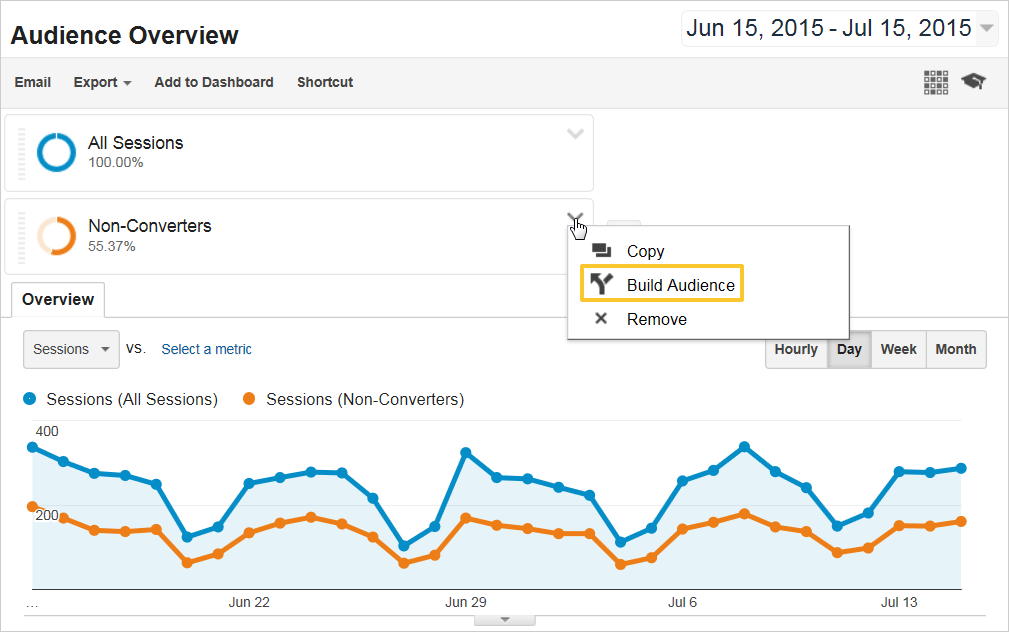Recognizing the Power of Remarketing In Google Analytics
Optimize Your ROI With Remarketing in Google Analytics
By using the power of customer information and customizing ads to certain audience sections, services can dramatically amplify their conversion rates. The journey to taking full advantage of ROI via remarketing is a nuanced path paved with understandings and possibilities that can improve the trajectory of your marketing endeavors.
Recognizing Remarketing in Google Analytics
Understanding remarketing in Google Analytics is important for maximizing your digital marketing method. Remarketing enables you to target individuals who have previously seen your website or engaged with your application, providing them with tailored advertisements as they browse various other websites or make use of various other apps within the Google Display Network. This strategy assists maintain your brand name top of mind and motivates individuals to go back to your website, ultimately increasing the chance of conversion.
By making use of Google Analytics, you can track the performance of your remarketing campaigns, acquiring useful understandings into user behavior, engagement, and conversions. This data allows you to improve your targeting, bidding, and messaging methods to improve the general performance of your projects.
In addition, understanding the various kinds of remarketing lists available in Google Analytics, such as typical, dynamic, and comparable target markets, allows you to create highly fractional and personalized campaigns customized to certain customer segments. This level of granularity can considerably boost the importance and effect of your remarketing initiatives, eventually maximizing your roi.
Setting Up Remarketing Checklists
To properly execute remarketing projects in Google Analytics, the preliminary step involves configuring and creating remarketing checklists targeting certain individual segments based upon their interactions with your site or application. By establishing remarketing lists, you can tailor your advertising and marketing initiatives to get to customers who have actually currently shown interest in your items or services.
To begin, browse to the Admin section of your Google Analytics account and pick the Home where you intend to develop the remarketing list. Under the Residential or commercial property column, click on 'Target market Definitions' and choose 'Target markets.' Next, click on the red 'New Target market' button and choose 'Create New' to define the criteria for your remarketing listing.

Crafting Efficient Remarketing Advertisements

When crafting your advertisements, emphasis on developing attention-grabbing headlines and compelling visuals that stand apart to prospective clients. Integrate solid calls-to-action that urge customers to review your site and finish a wanted action. Make use of dynamic remarketing to reveal personalized ads featuring product and services that users have actually formerly watched on your website.
Furthermore, ensure that your advertisements are mobile-friendly given that a considerable part of web traffic comes from mobile devices. Examination different advertisement variants to recognize which messages and layouts drive the most effective results. By continuously refining and optimizing your remarketing ads based on efficiency data, you can optimize their effectiveness and enhance your return on financial investment.
Analyzing Remarketing Efficiency

Via Google Analytics, marketing professionals can track the performance of their remarketing campaigns in real-time, enabling them to recognize patterns, patterns, and areas for renovation quickly. By analyzing the information, marketing experts can determine which advertisements are carrying out well, which audience sections are reacting positively, and which channels are driving the most conversions. This level of granularity makes it possible for marketers to make data-driven choices to enhance their remarketing projects for far better outcomes.
Maximizing ROI With Remarketing
Examining remarketing data in Google Analytics allows marketing experts to determine chances for enhancing return on investment (ROI) with calculated changes - What Is “Remarketing” In Google Analytics?. To make best use of ROI with remarketing, it is important to recognize the actions Extra resources of your target market. By analyzing customer interactions, such as the pages they checked out, the items they try this website viewed, or the activities they handled your website, you can tailor your remarketing projects better
Segmenting your audience based on their actions enables you to create customized and targeted ads that are more probable to resonate with them. By revealing appropriate advertisements to specific segments of your audience, you can enhance the chances of conversion and inevitably boost your ROI.
Additionally, testing different ad creatives, messaging, and offers can help identify what reverberates best with your audience. A/B testing allows you to experiment with different elements of your advertisements to establish what drives the greatest engagement and conversion prices.
Final Thought
In final thought, making best use these details of ROI with remarketing in Google Analytics requires a tactical method to examining individual behavior, segmenting target markets, developing tailored advertisements, and optimizing campaign performance. By leveraging data-driven understandings and checking different approaches, companies can enhance their remarketing efforts to drive higher engagement and conversion prices. This methodical strategy guarantees that sources are successfully alloted in the direction of optimizing rois in remarketing campaigns.
Next off, click on the red 'New Audience' switch and pick 'Create New' to specify the specifications for your remarketing listing.
By constantly refining and maximizing your remarketing advertisements based on performance information, you can maximize their performance and enhance your return on investment.
By diving right into these understandings, marketing experts can acquire a comprehensive understanding of how their remarketing initiatives are reverberating with their target audience and driving conversions. To make best use of ROI with remarketing, it is critical to comprehend the actions of your audience.In final thought, making the most of ROI with remarketing in Google Analytics needs a calculated technique to evaluating customer behavior, segmenting audiences, developing tailored ads, and enhancing campaign efficiency.